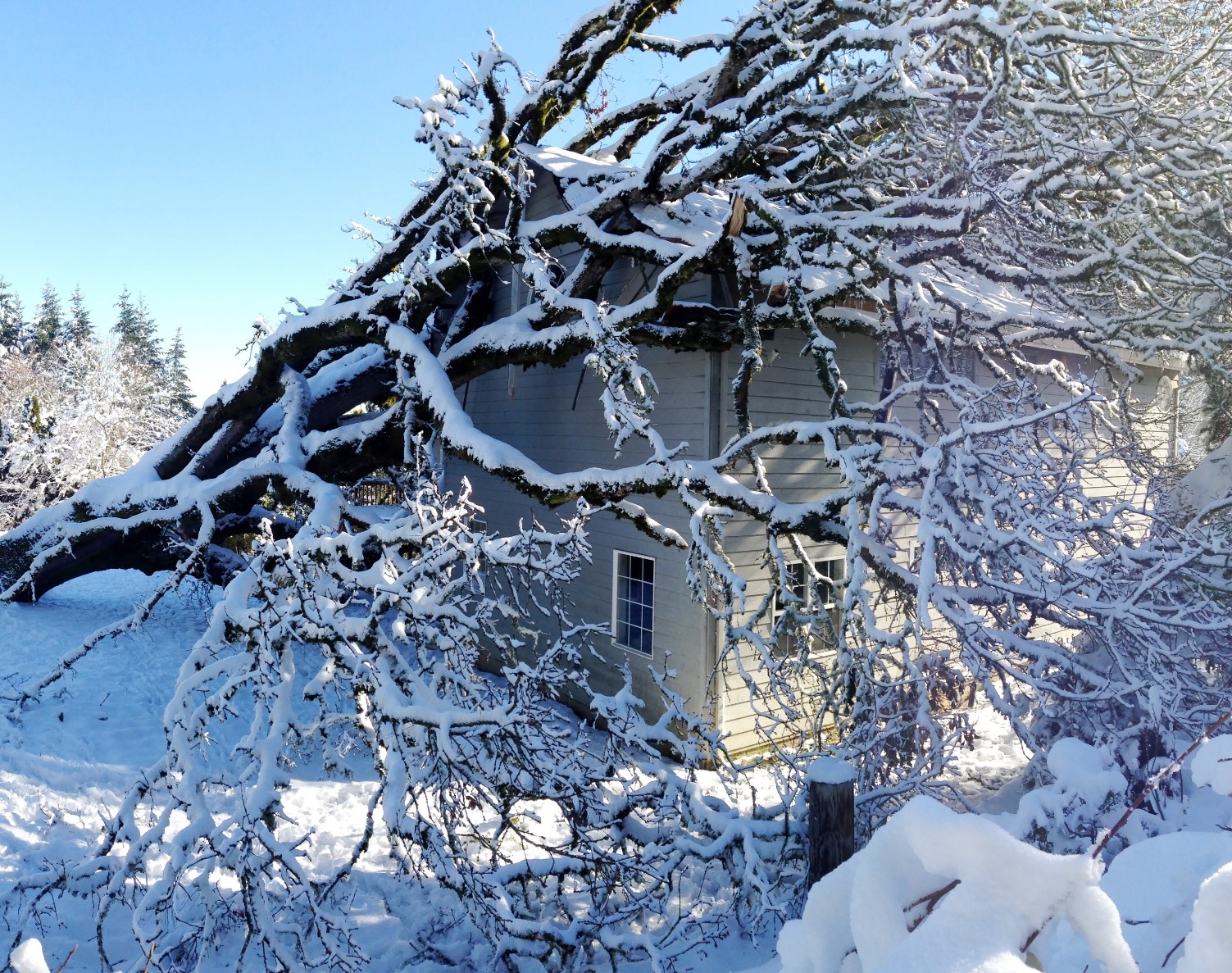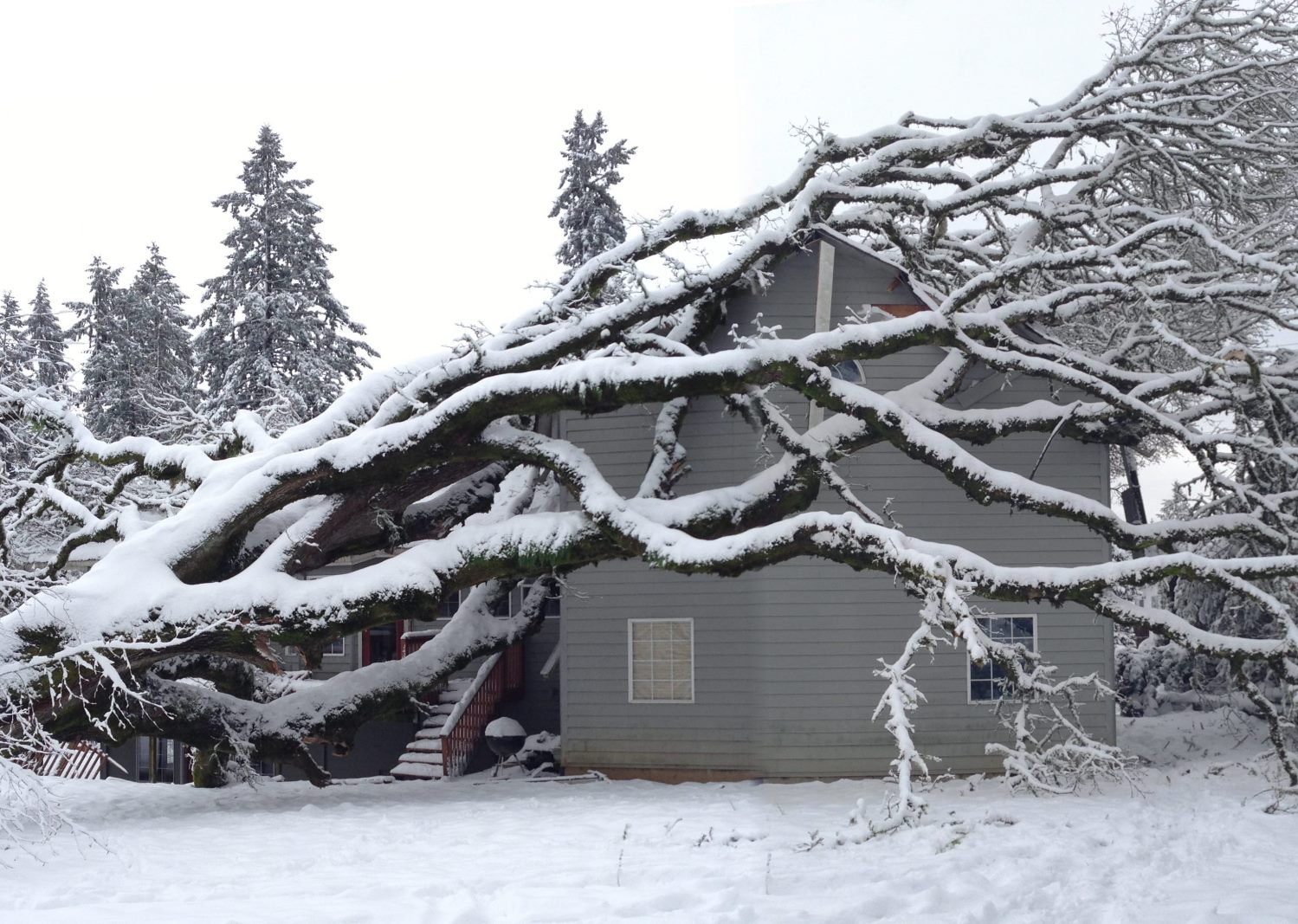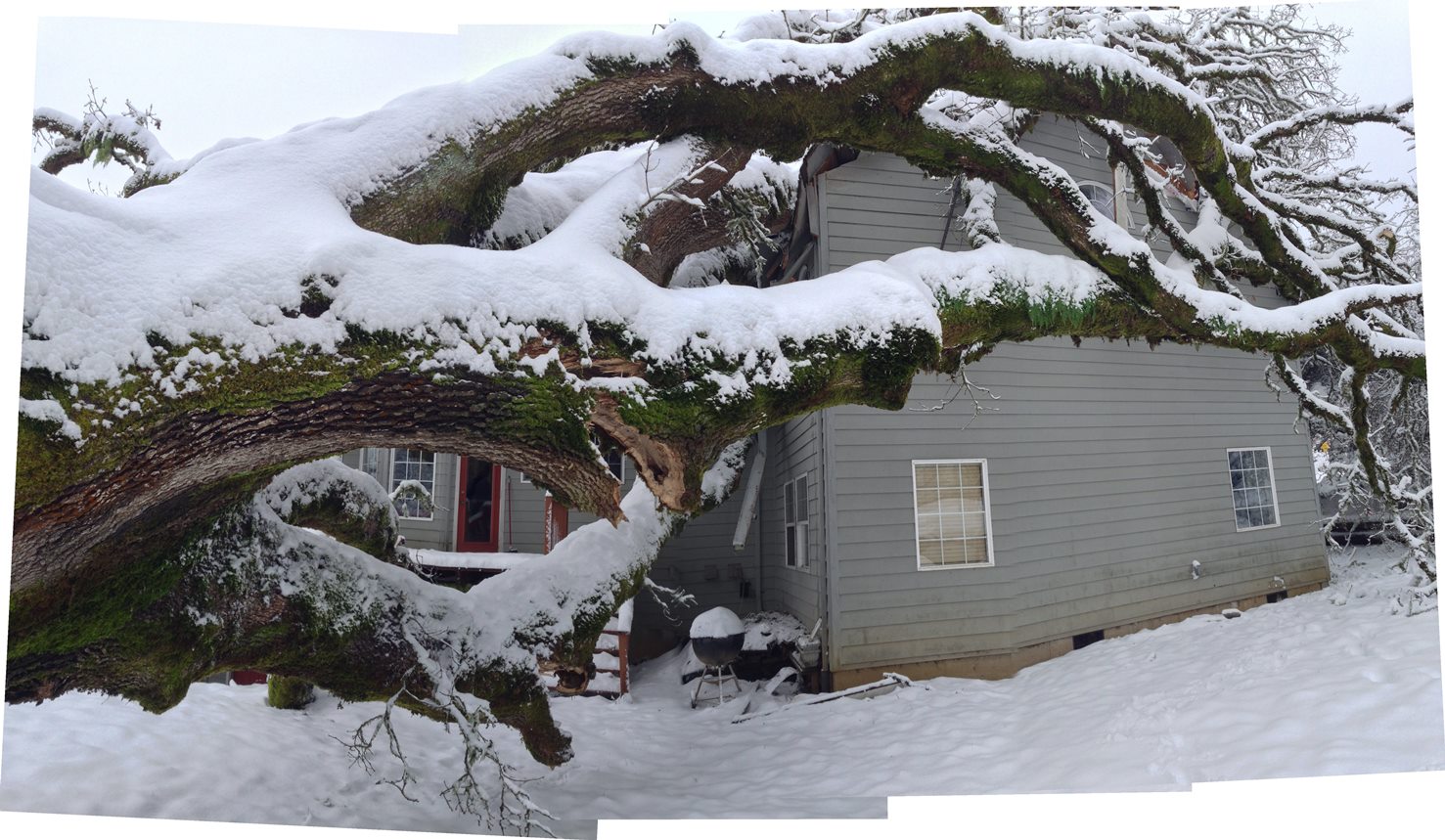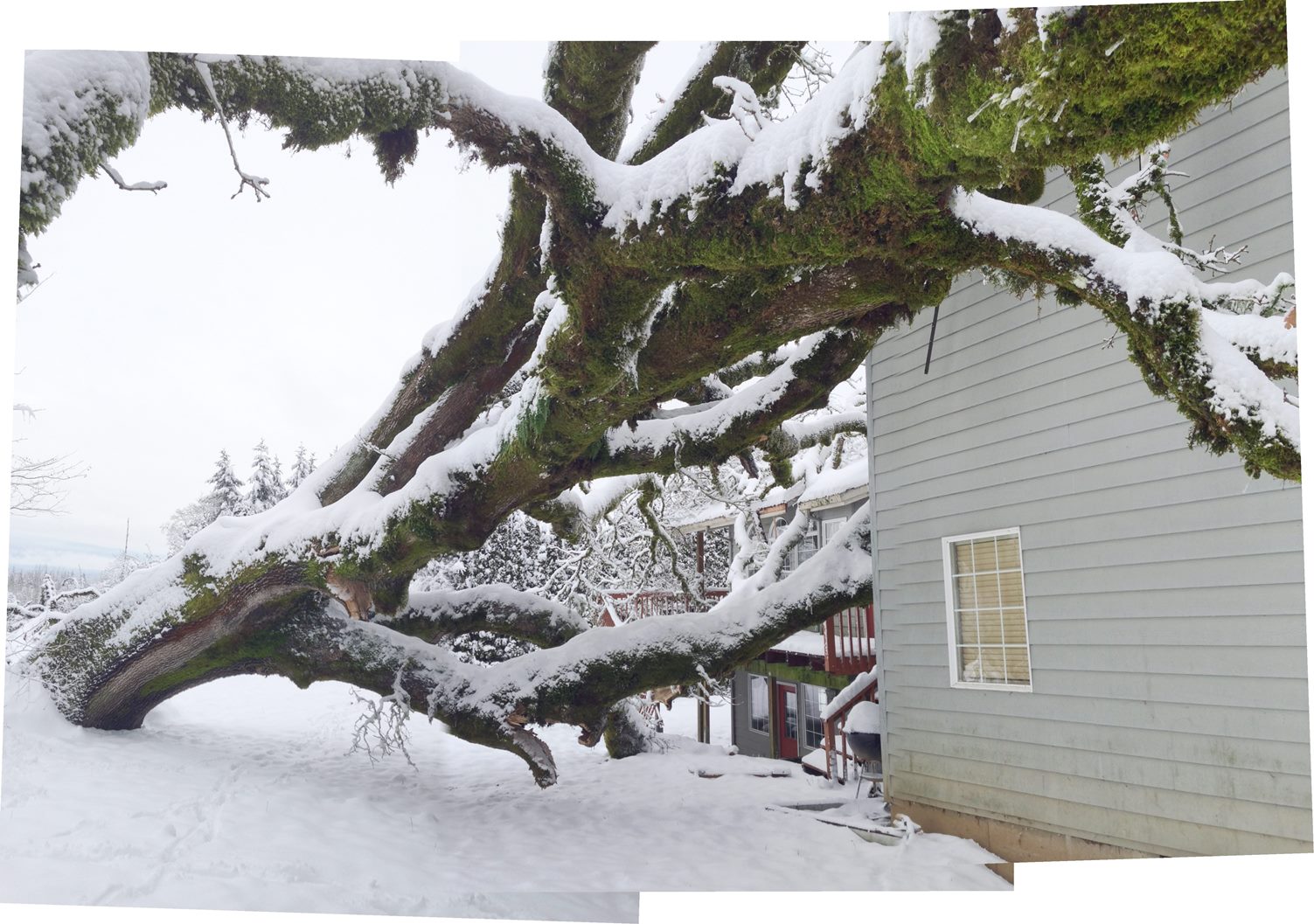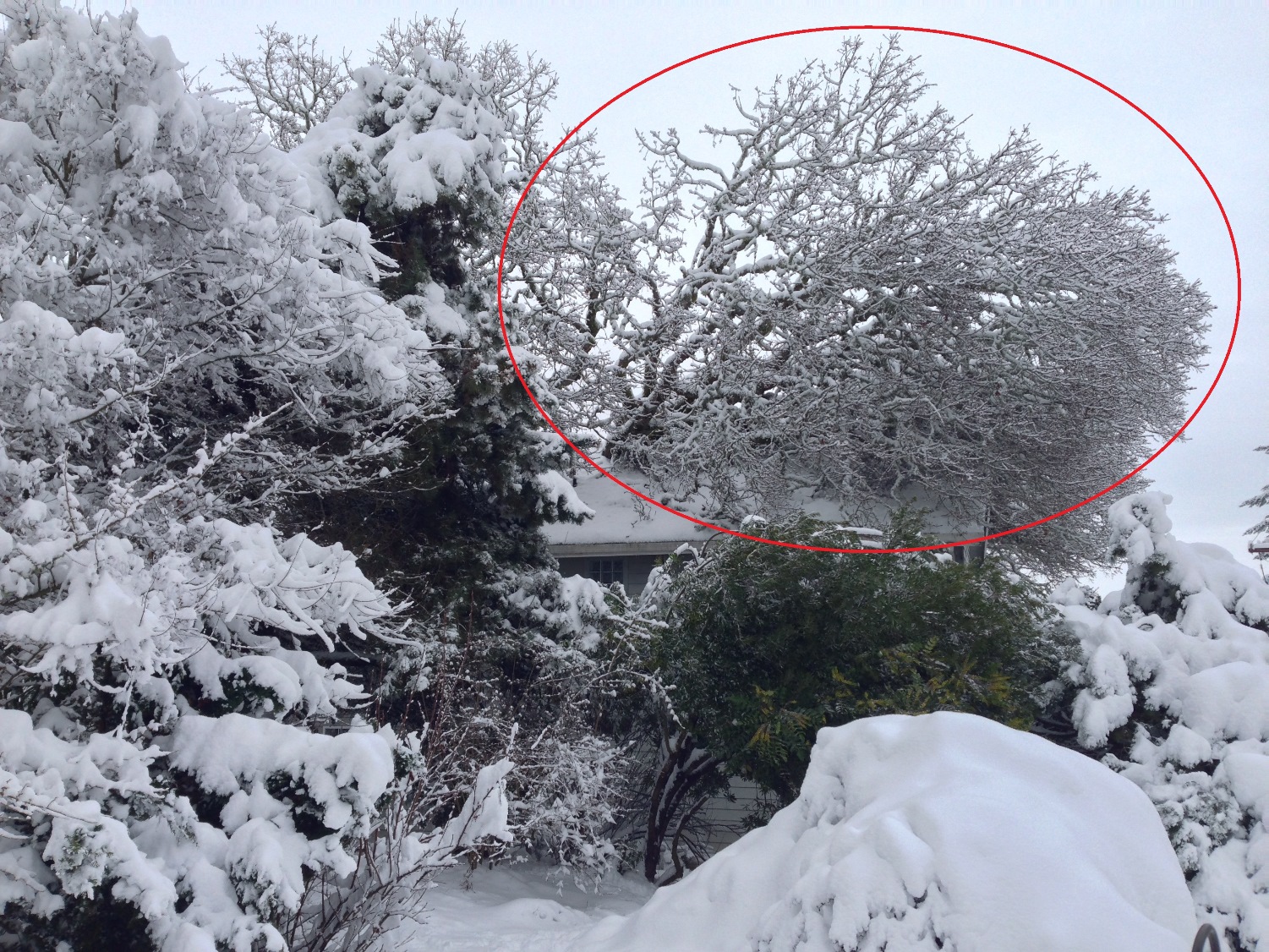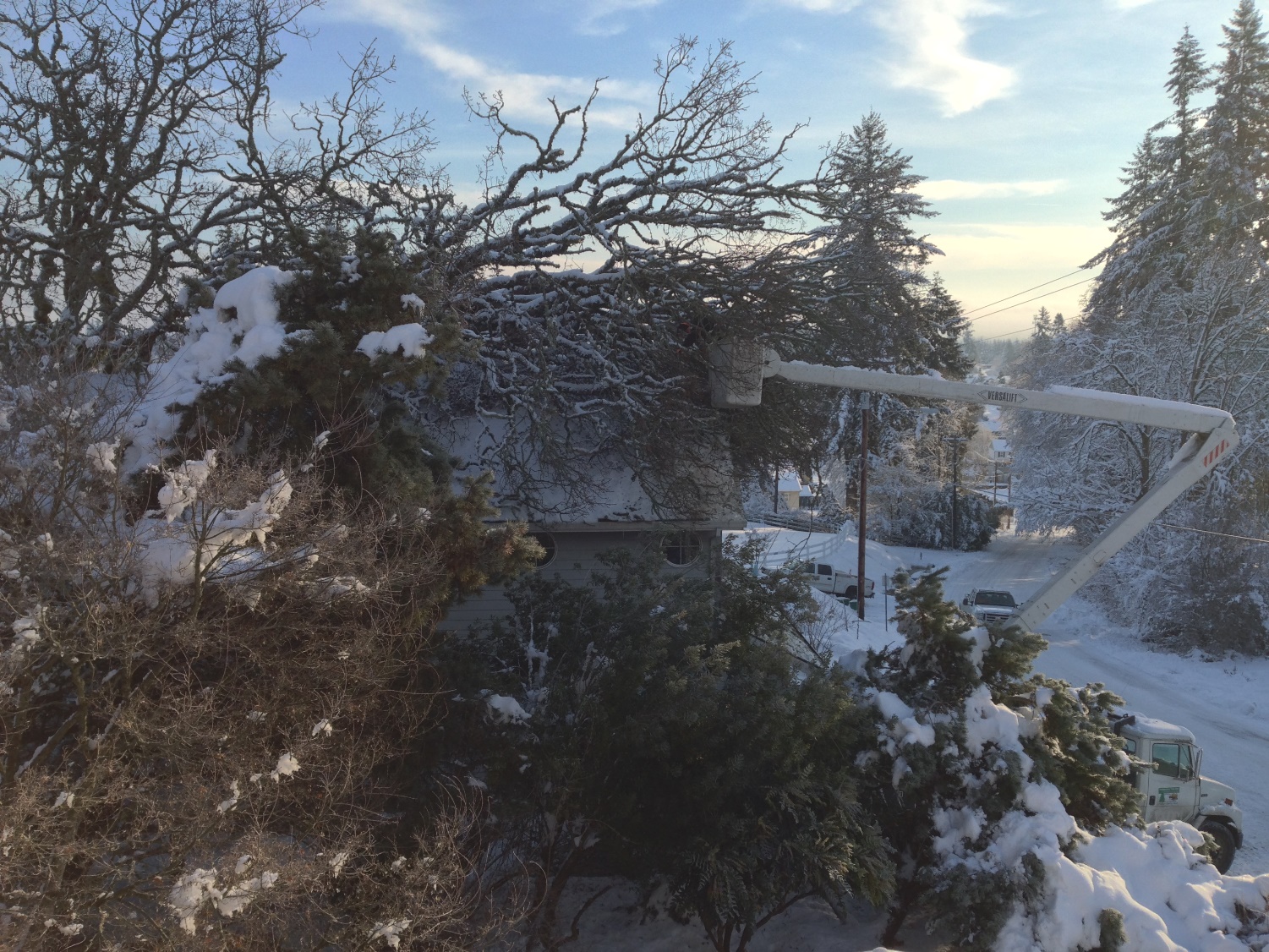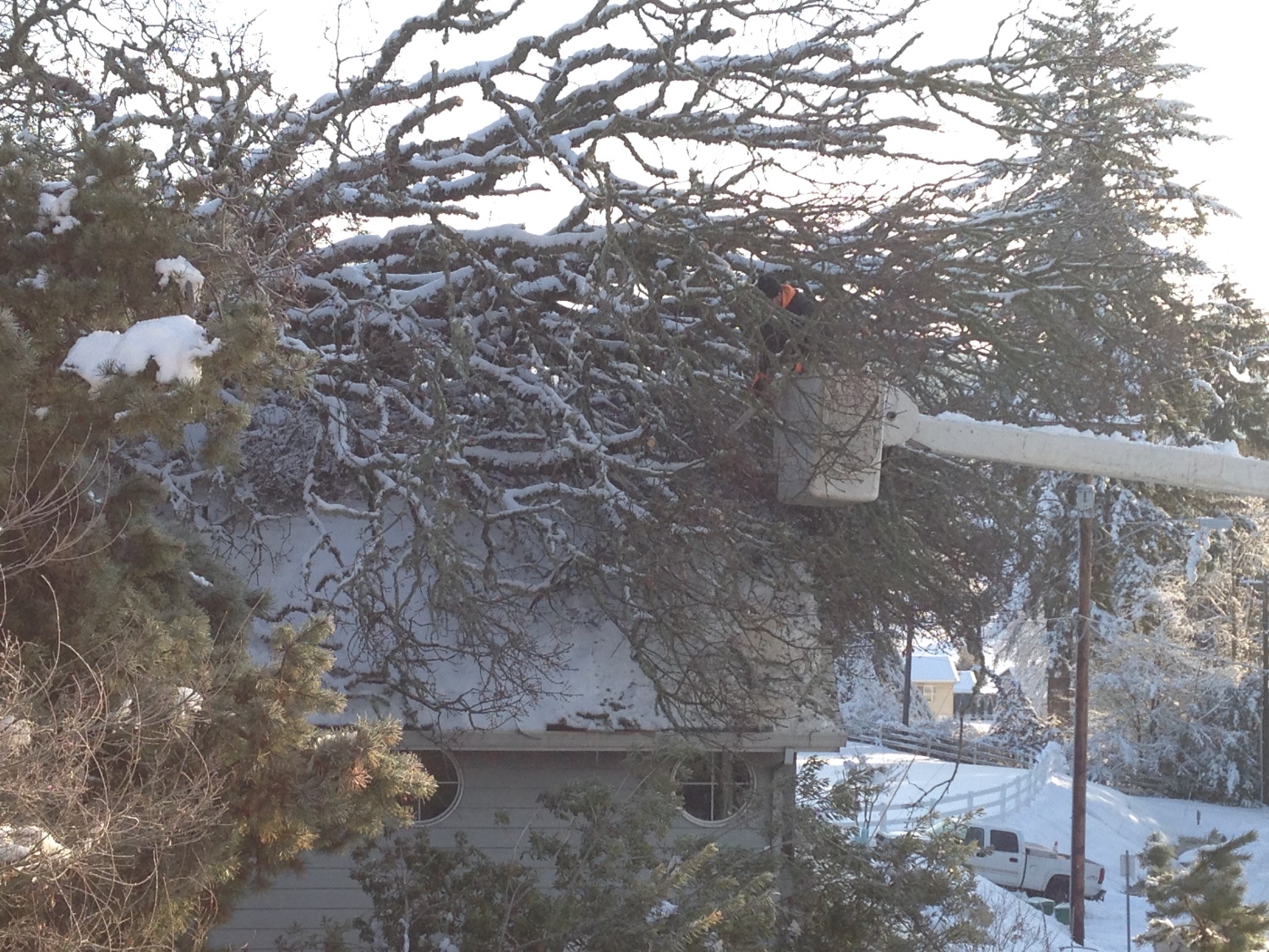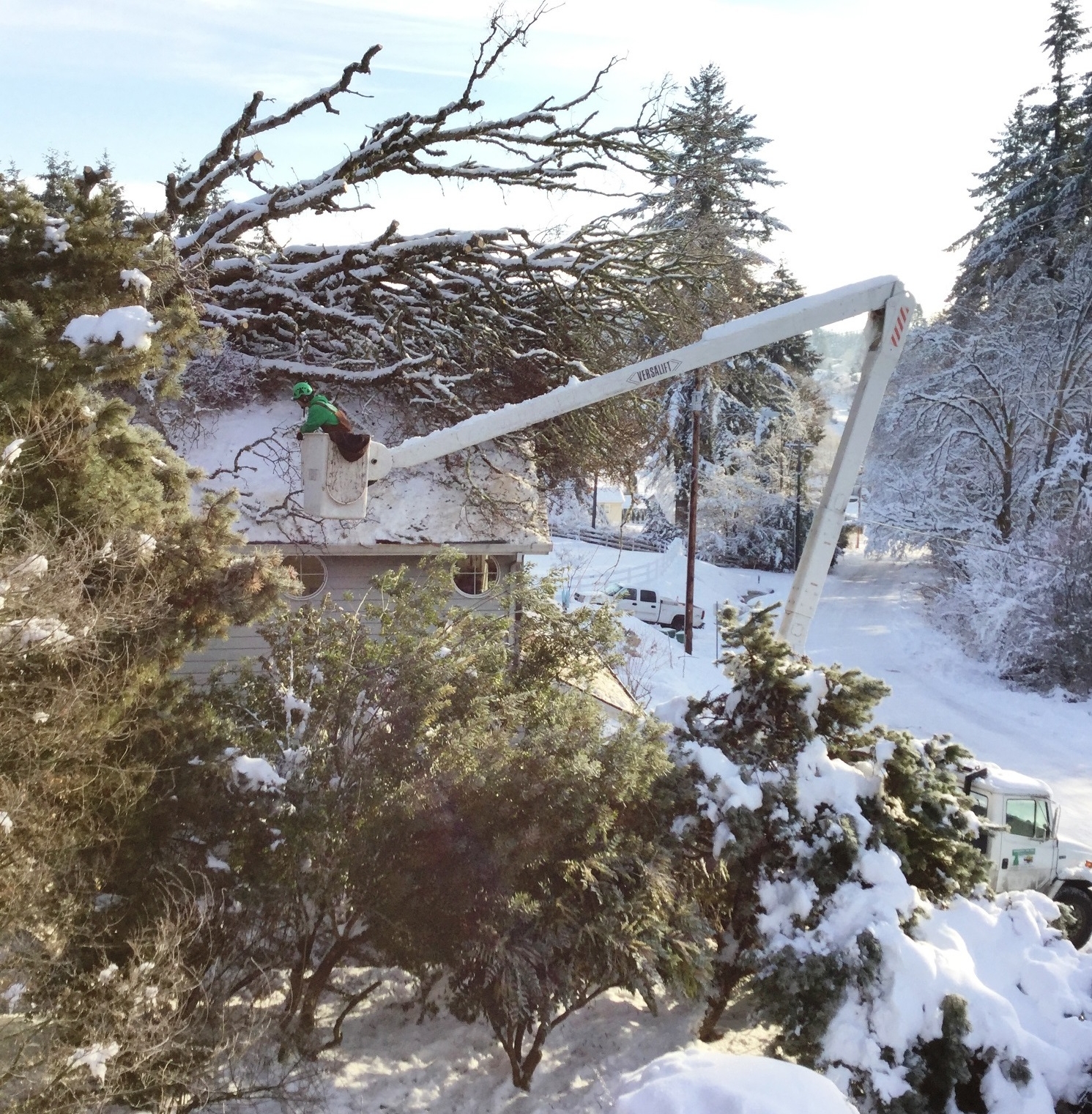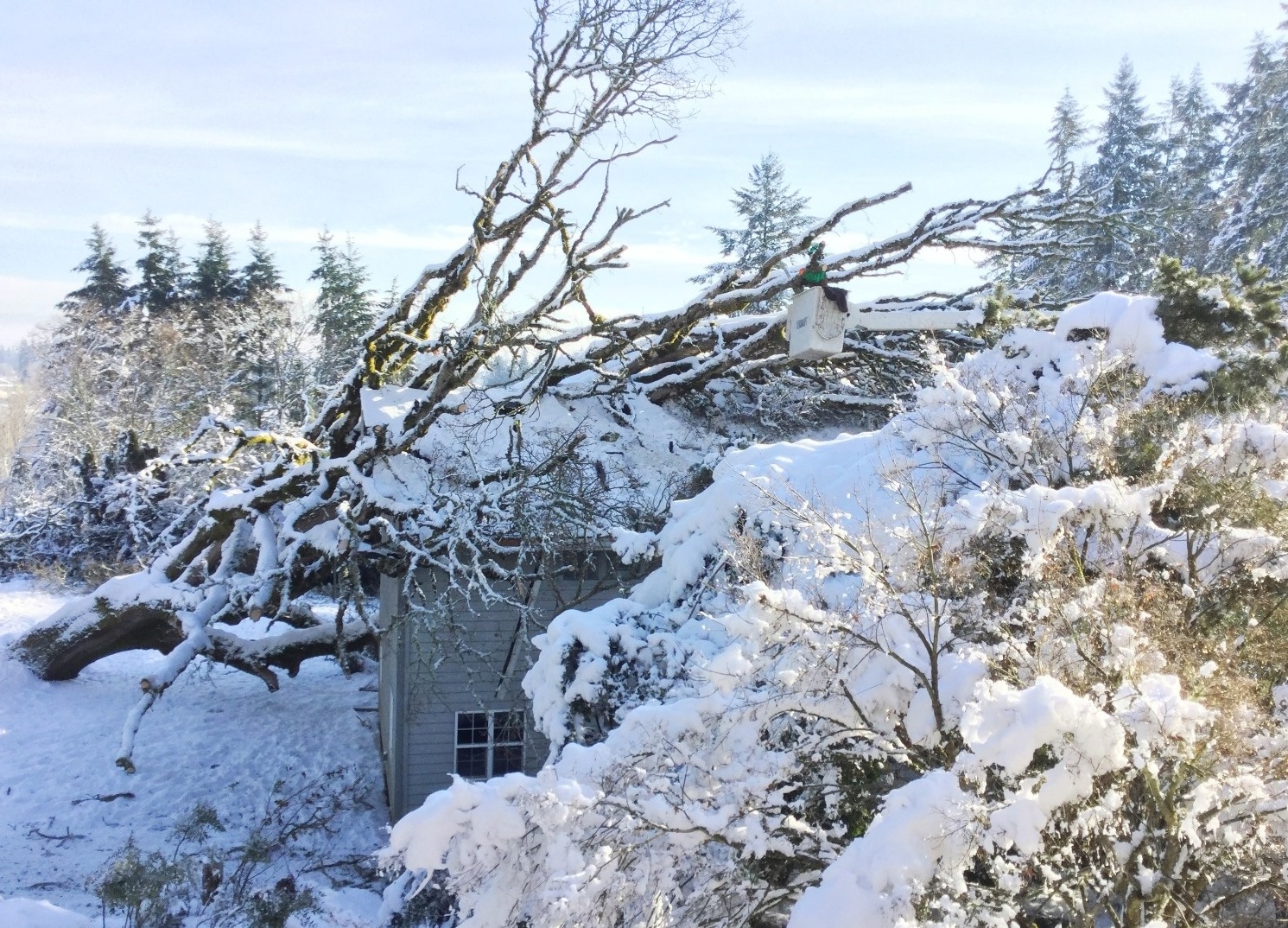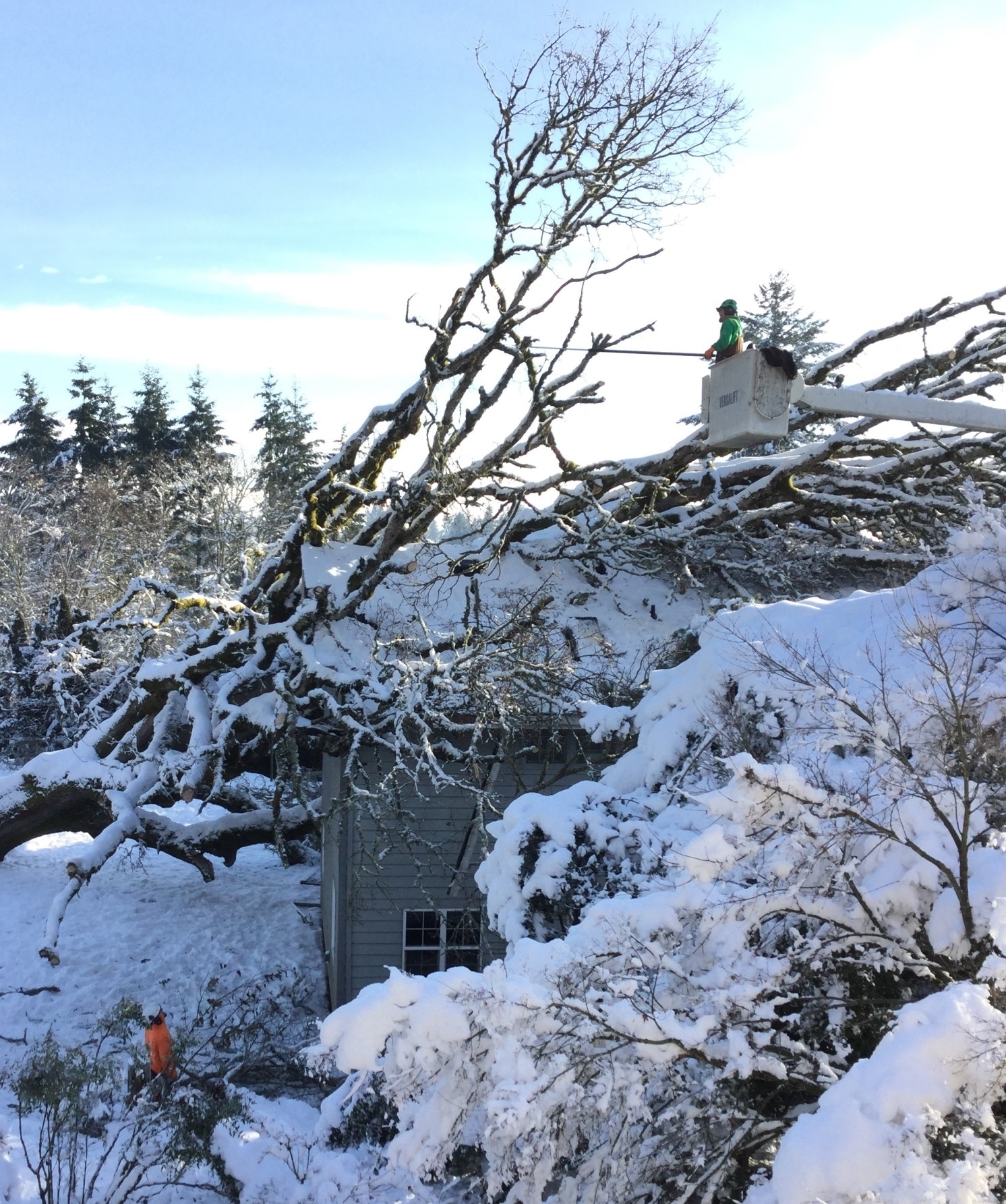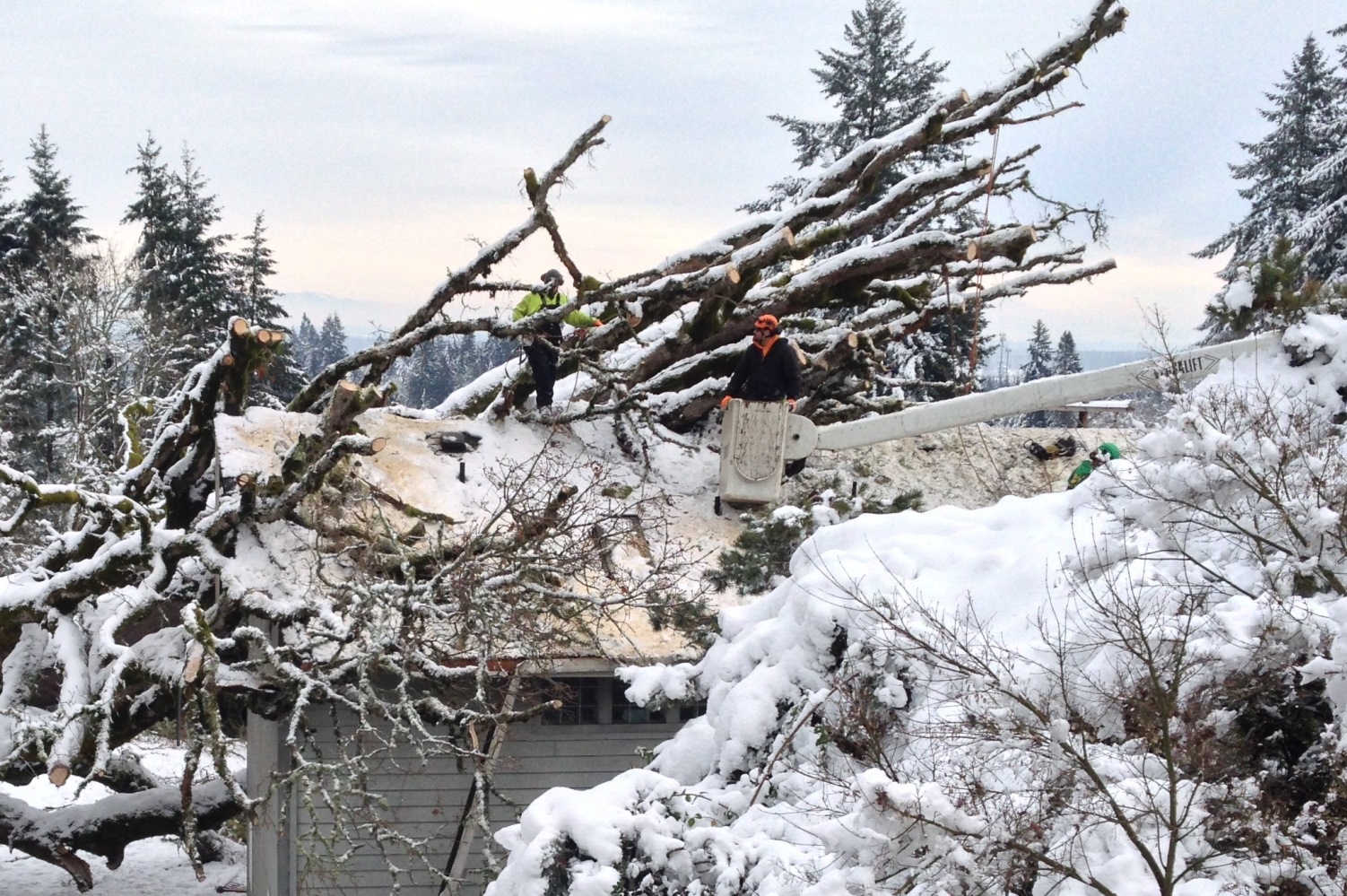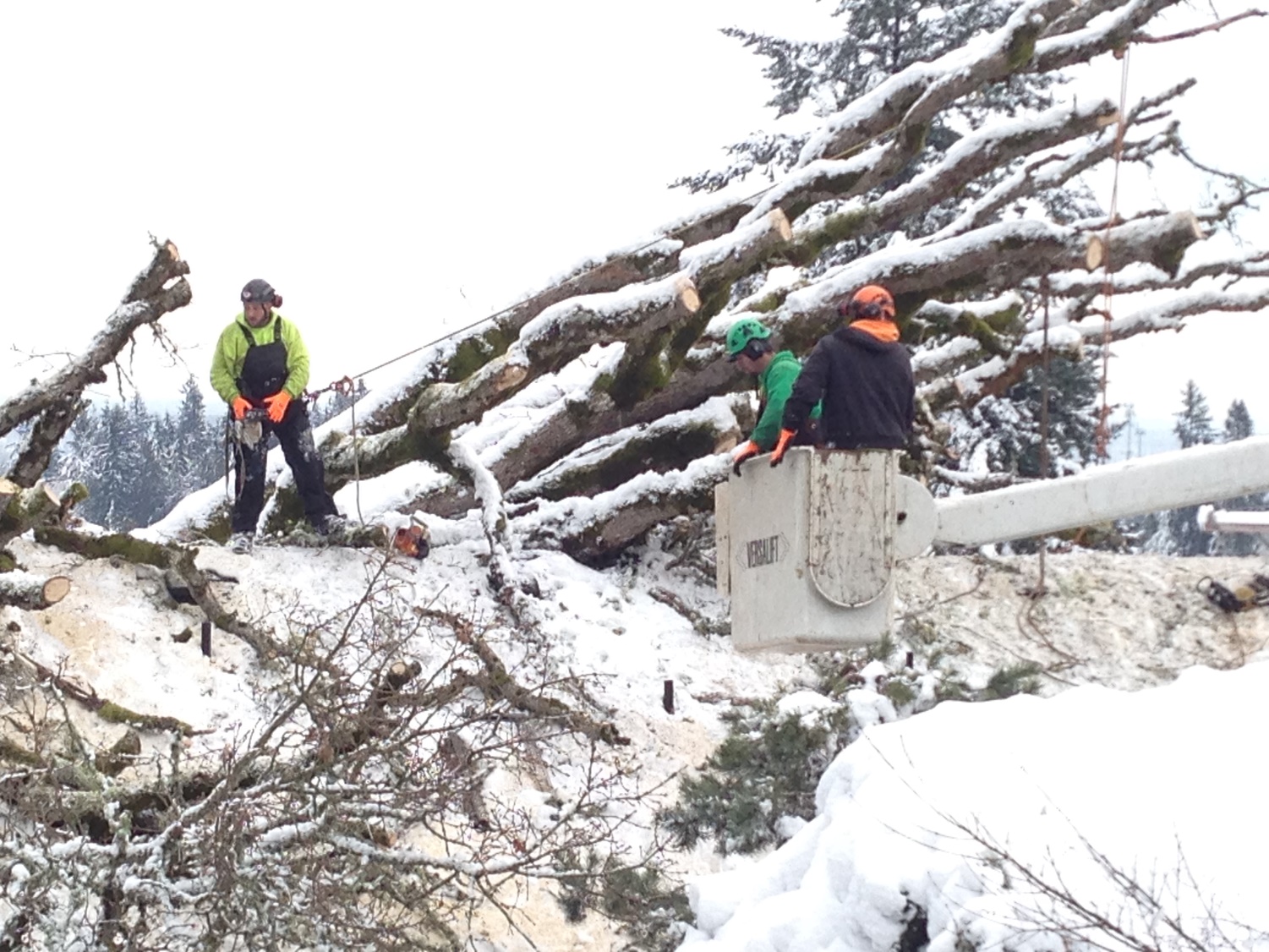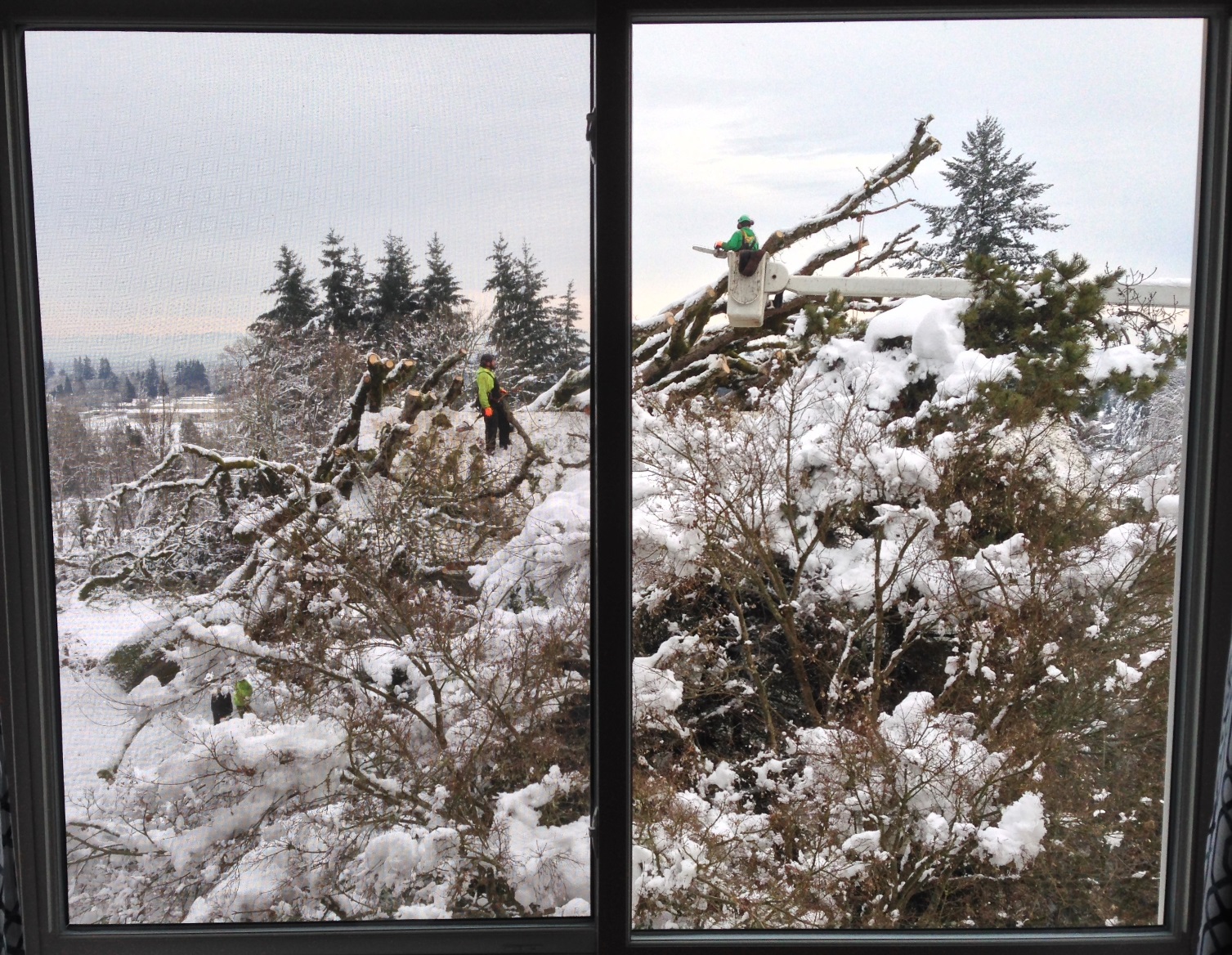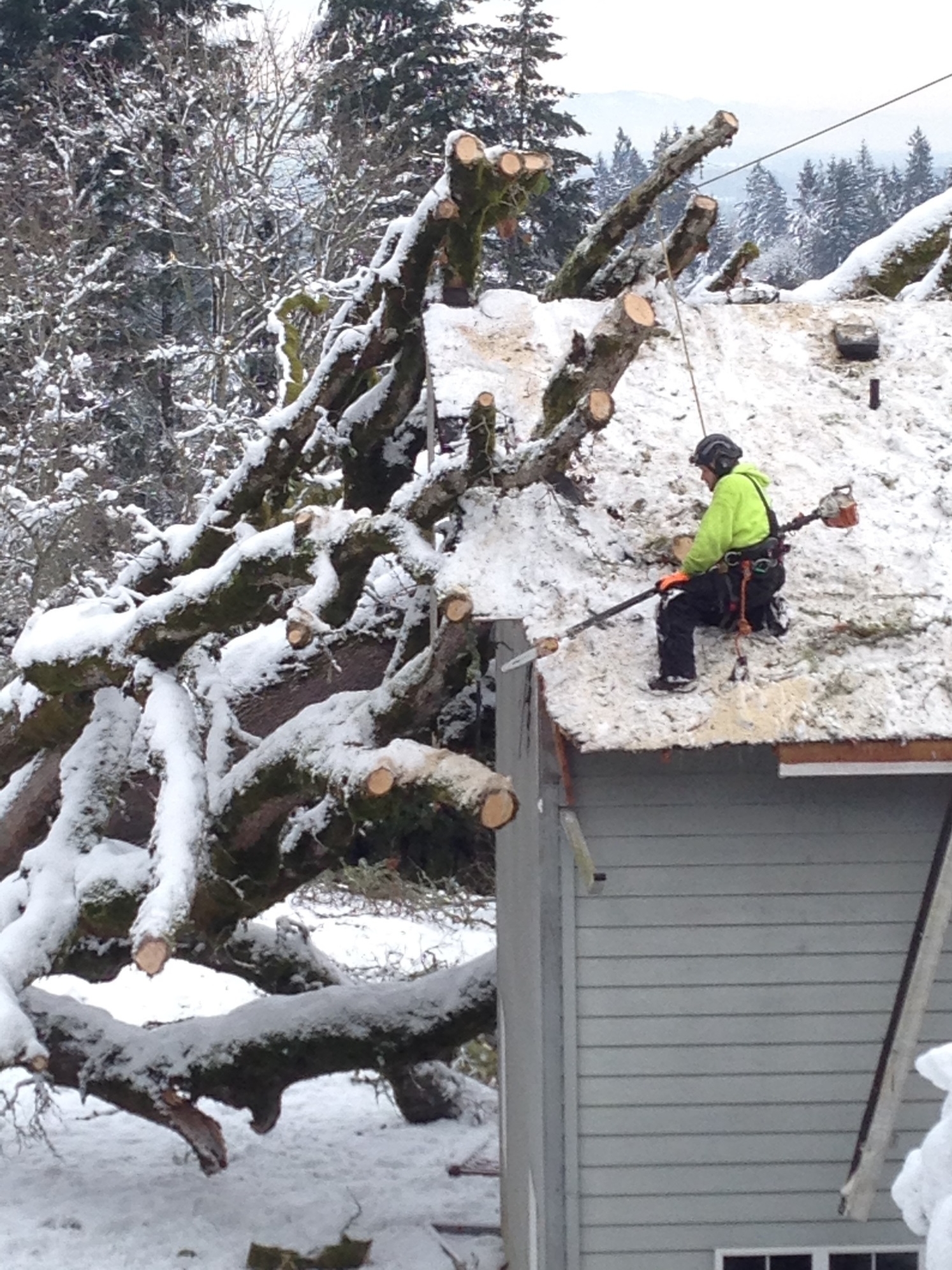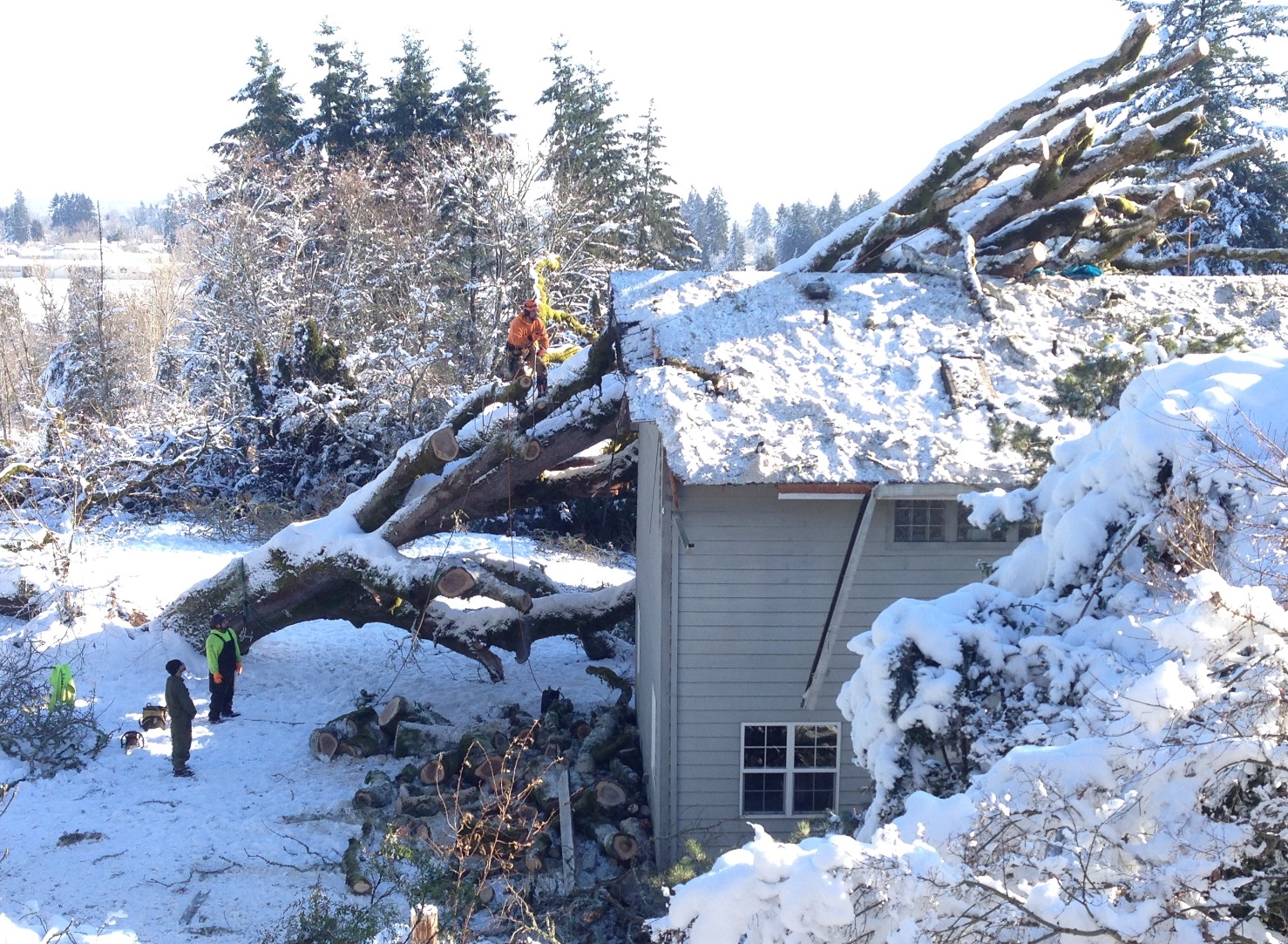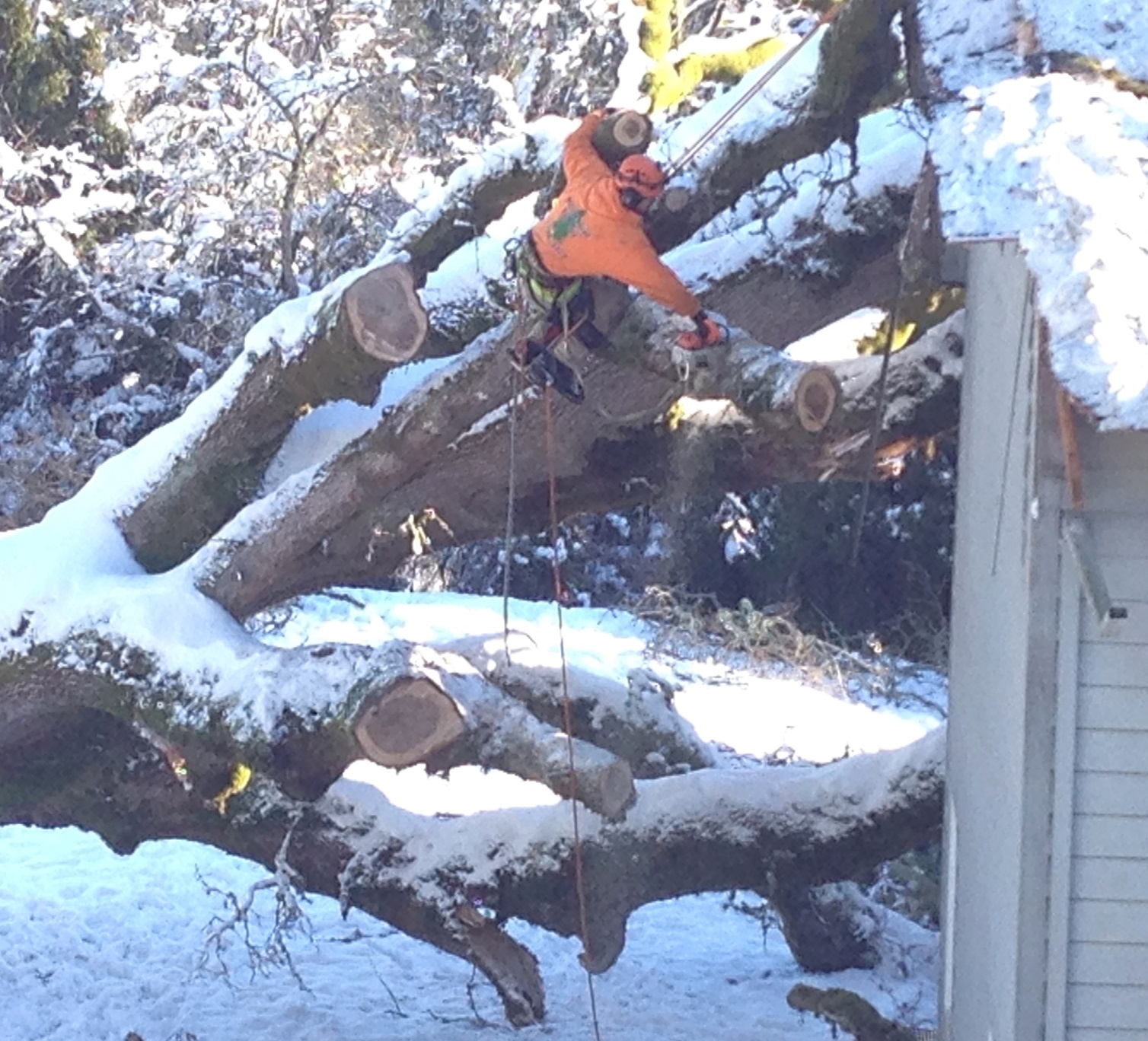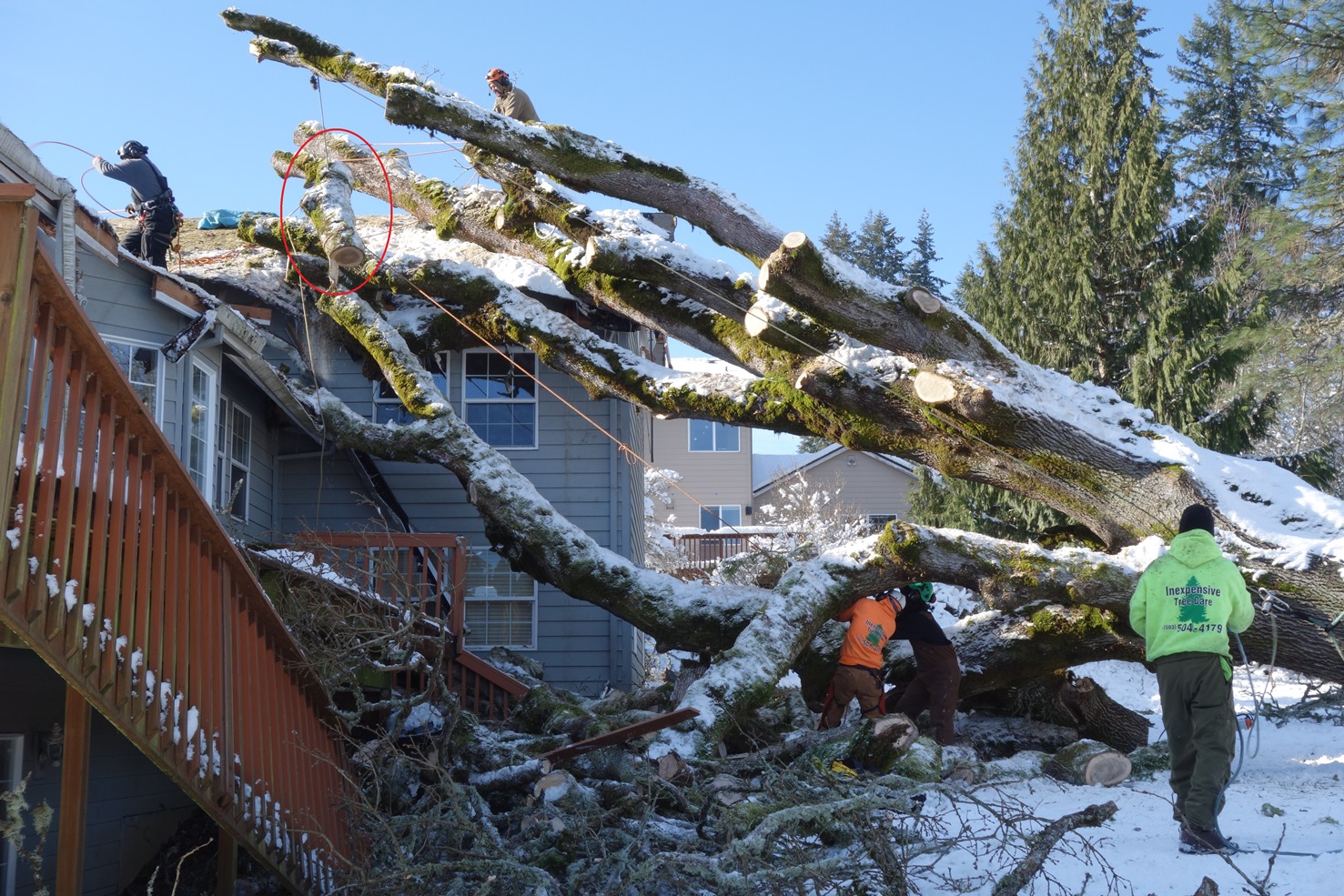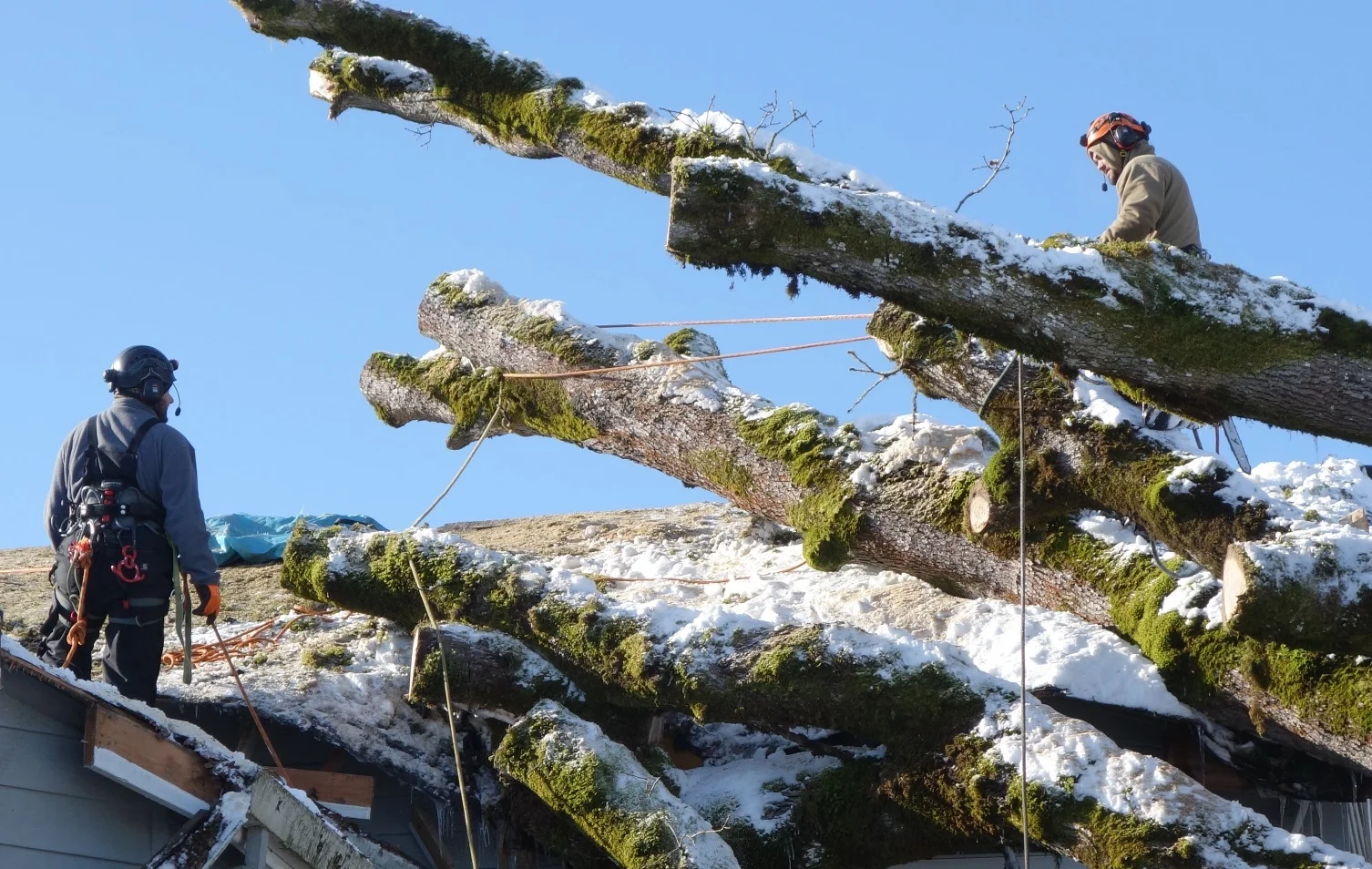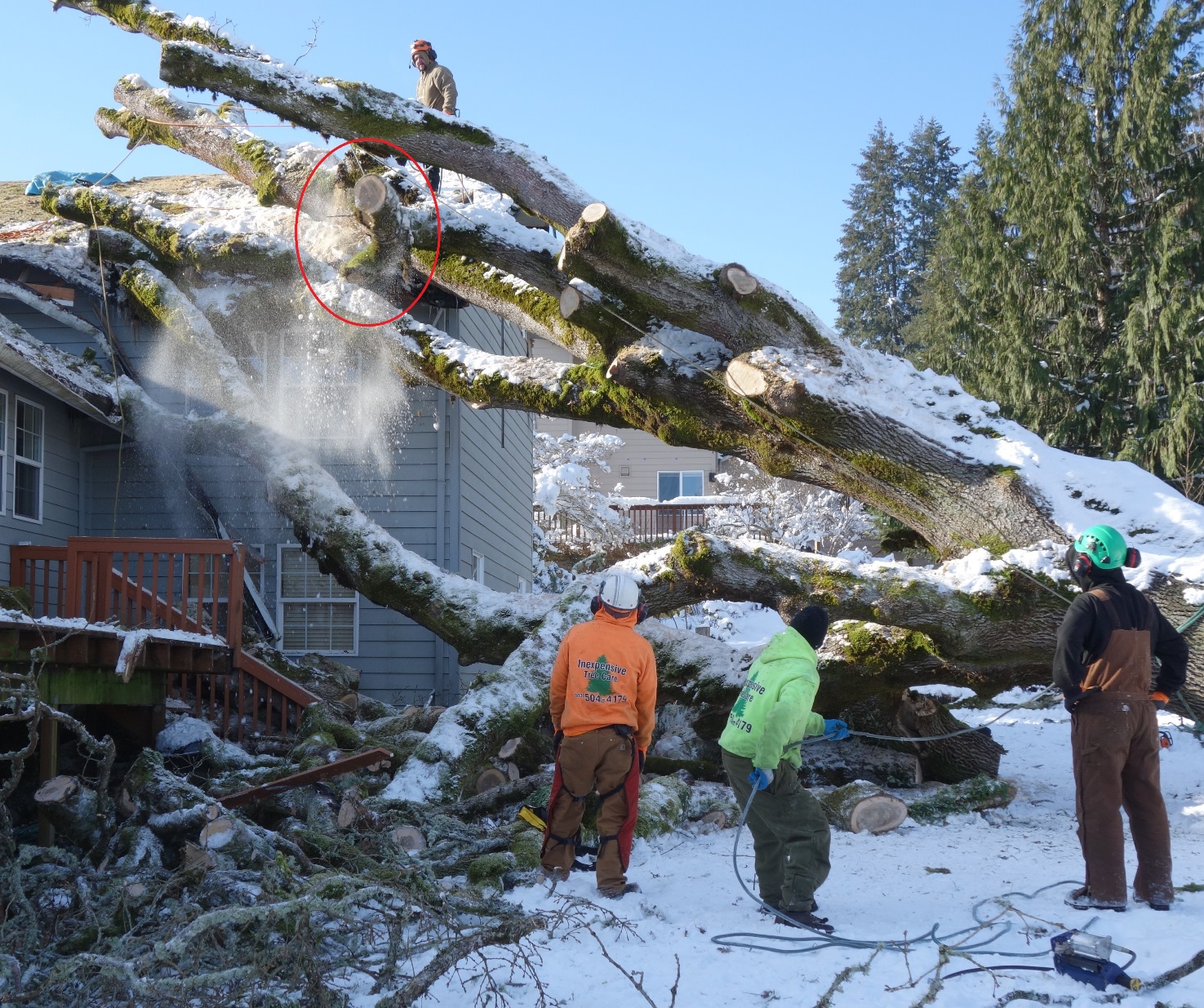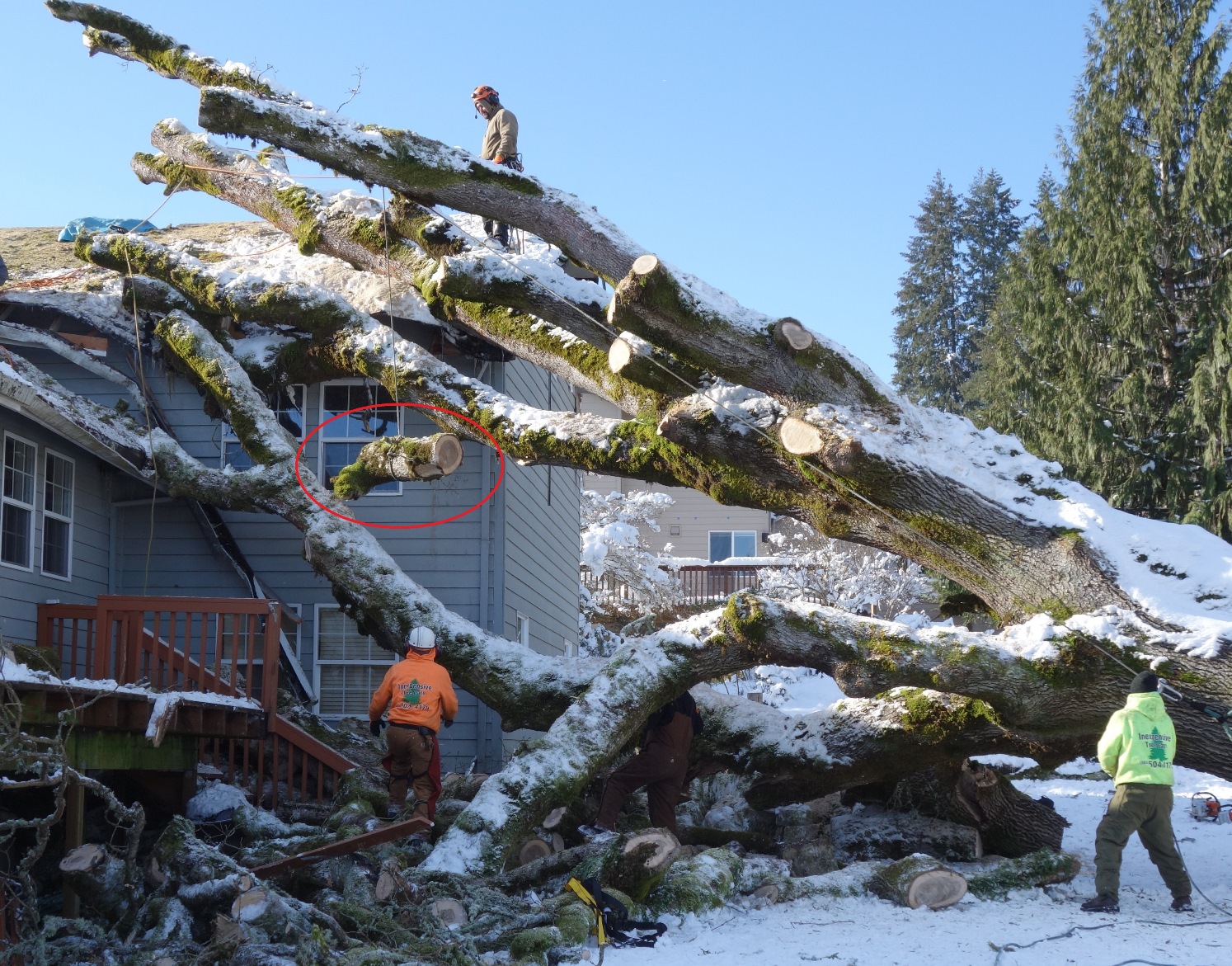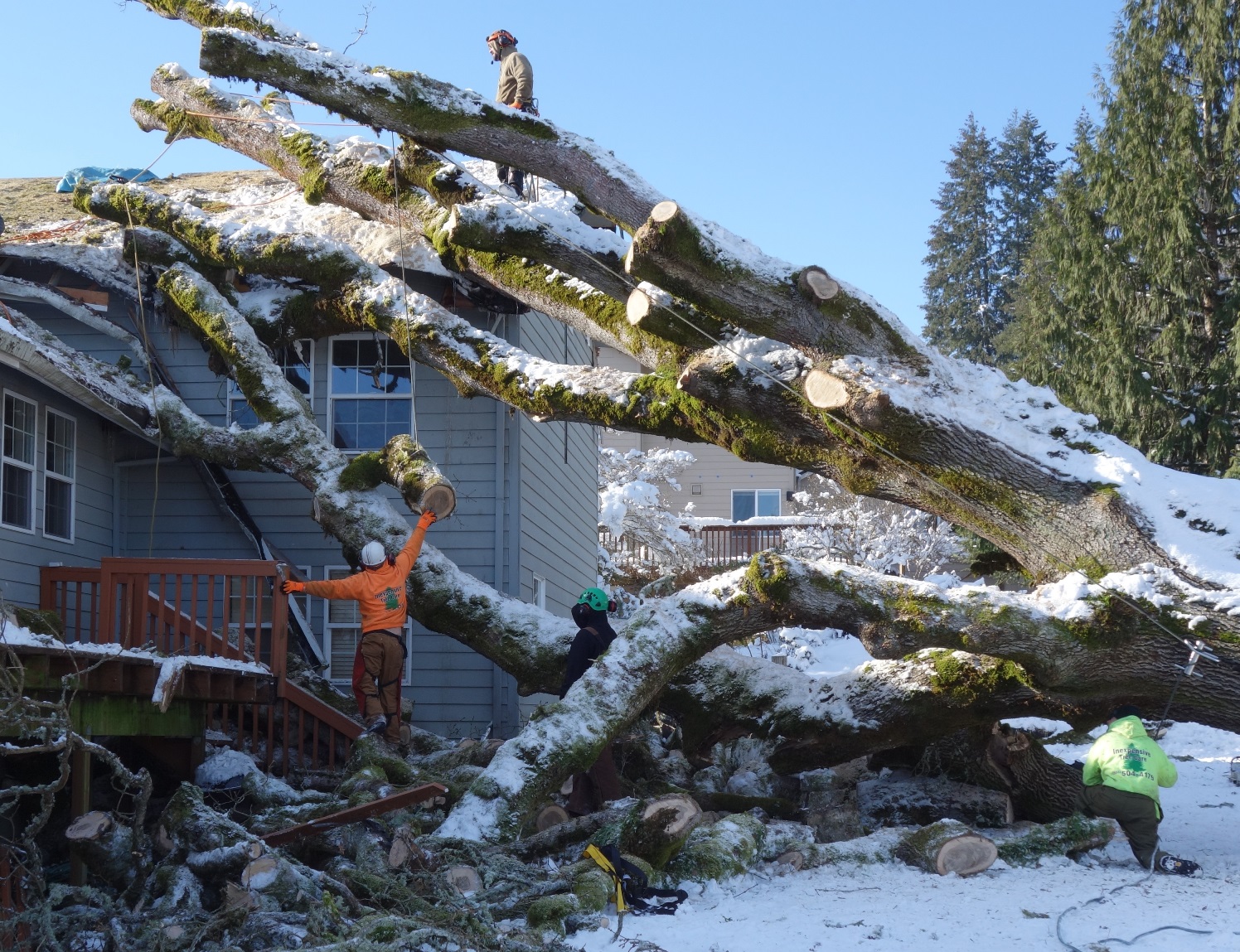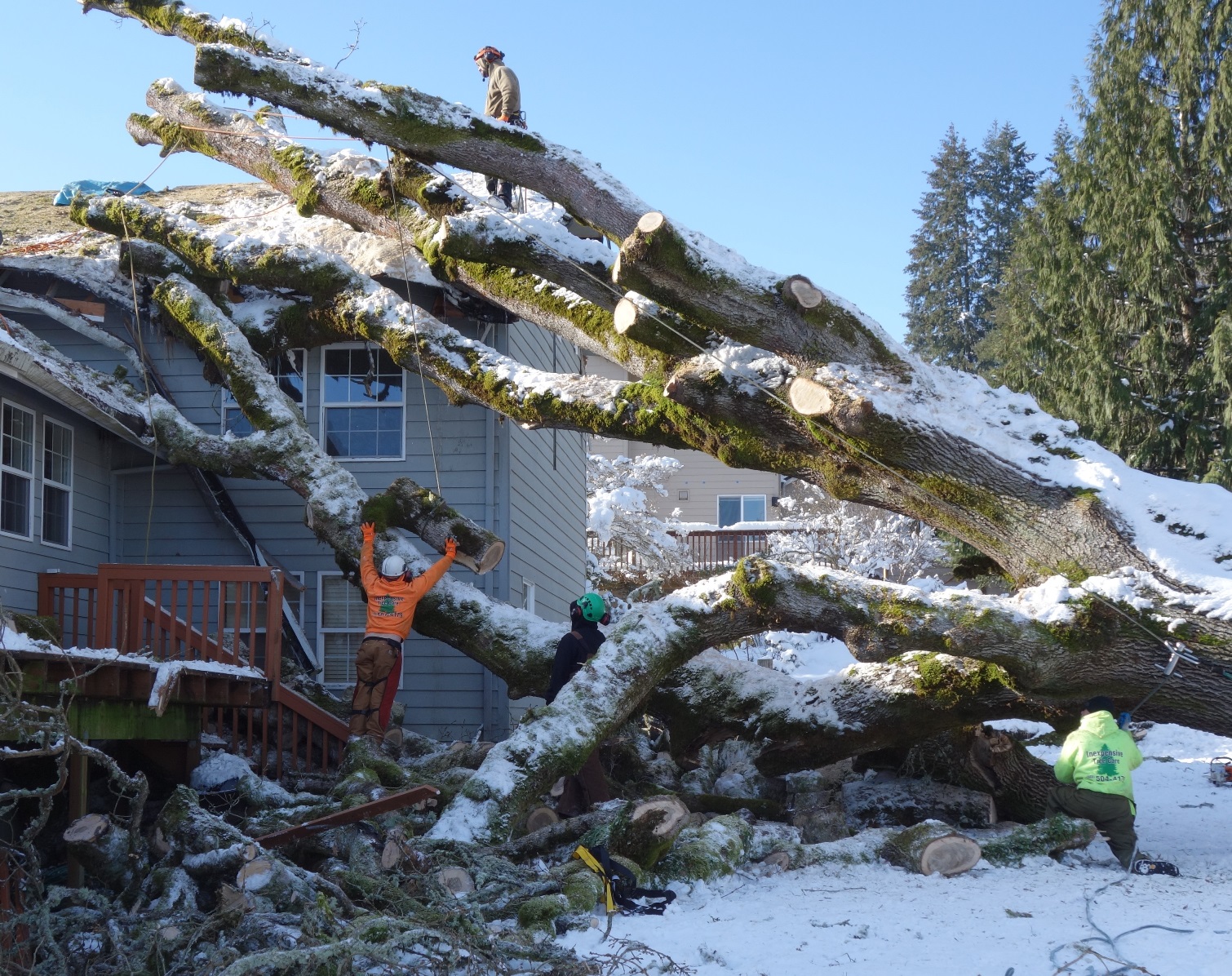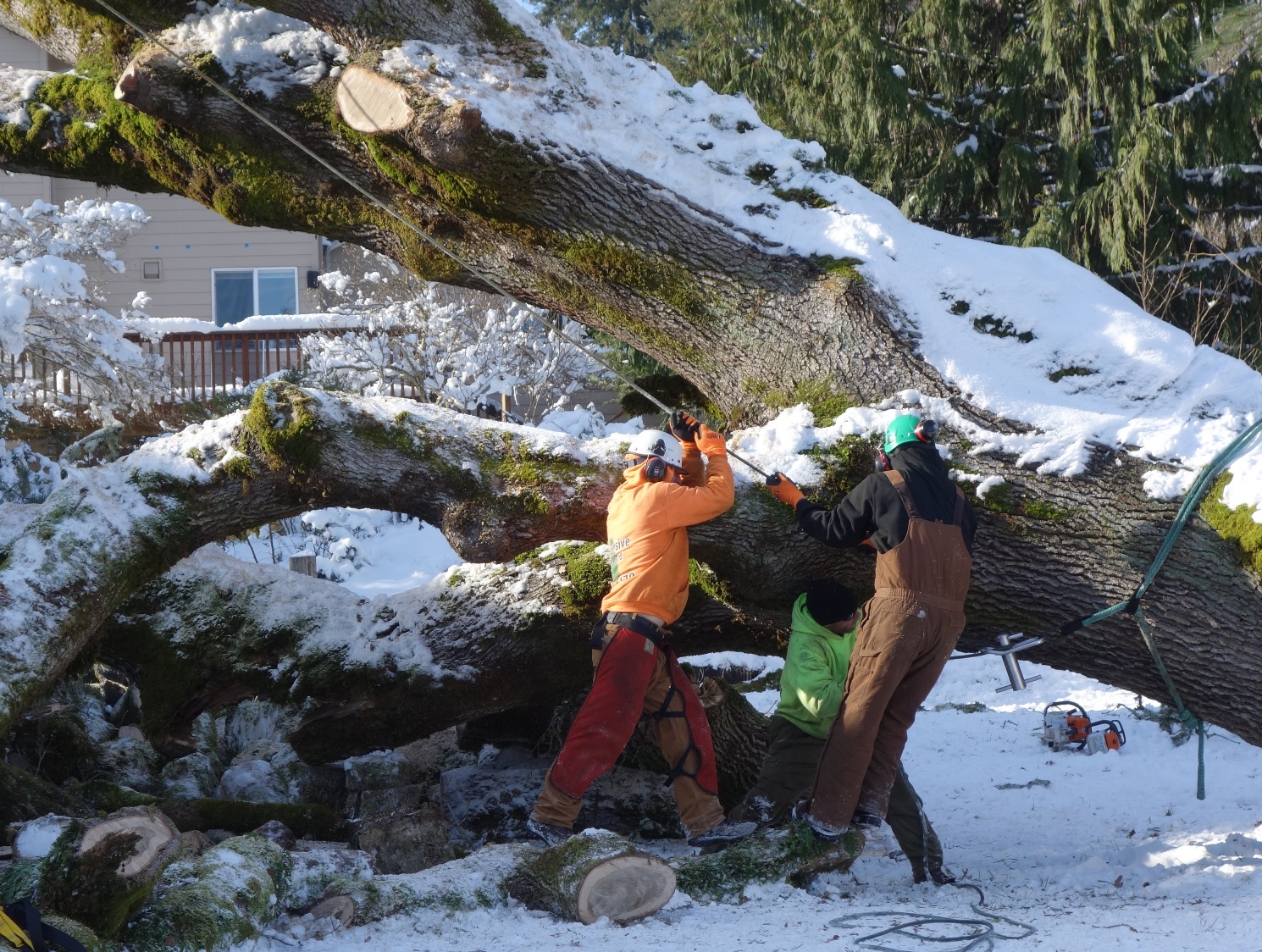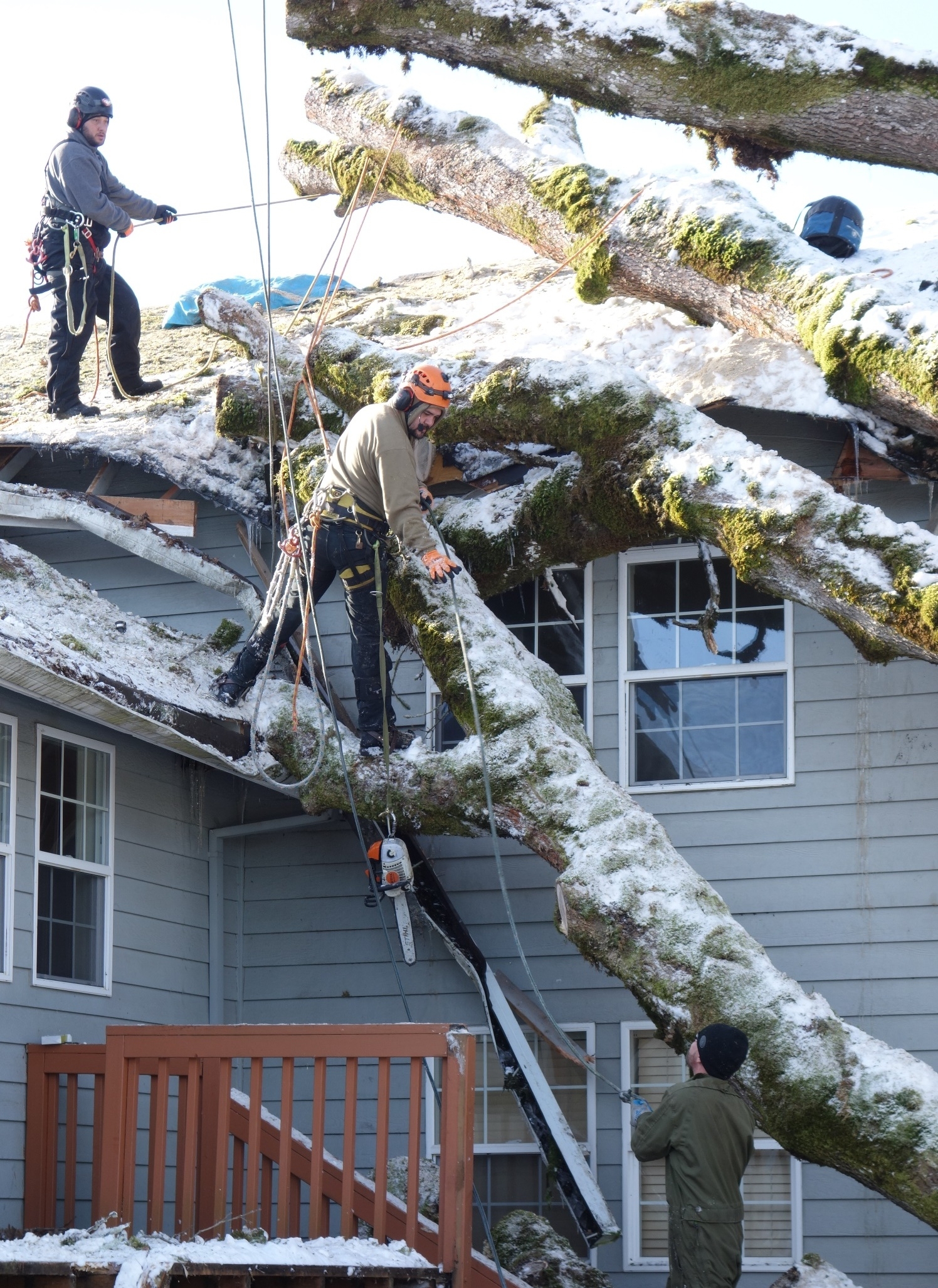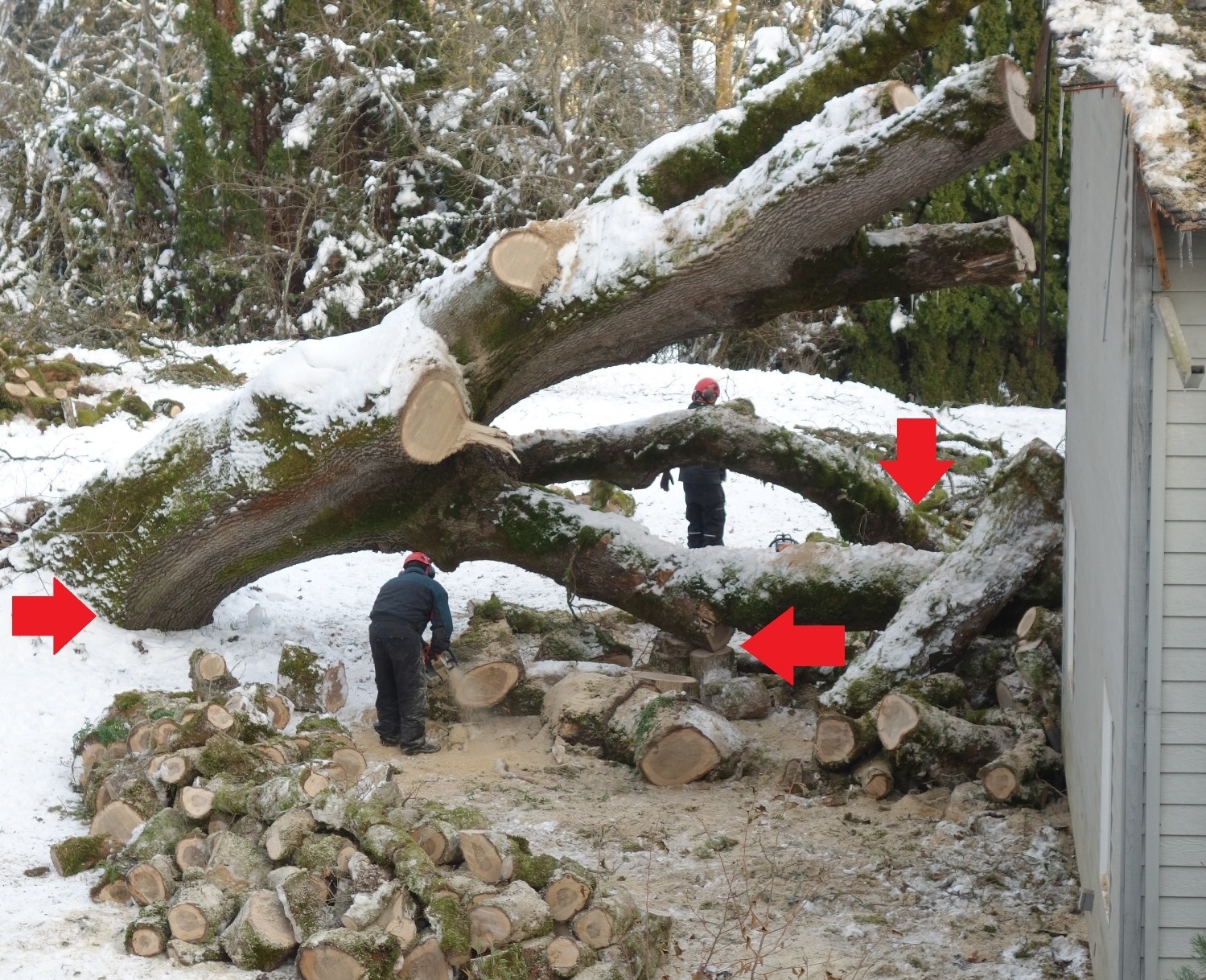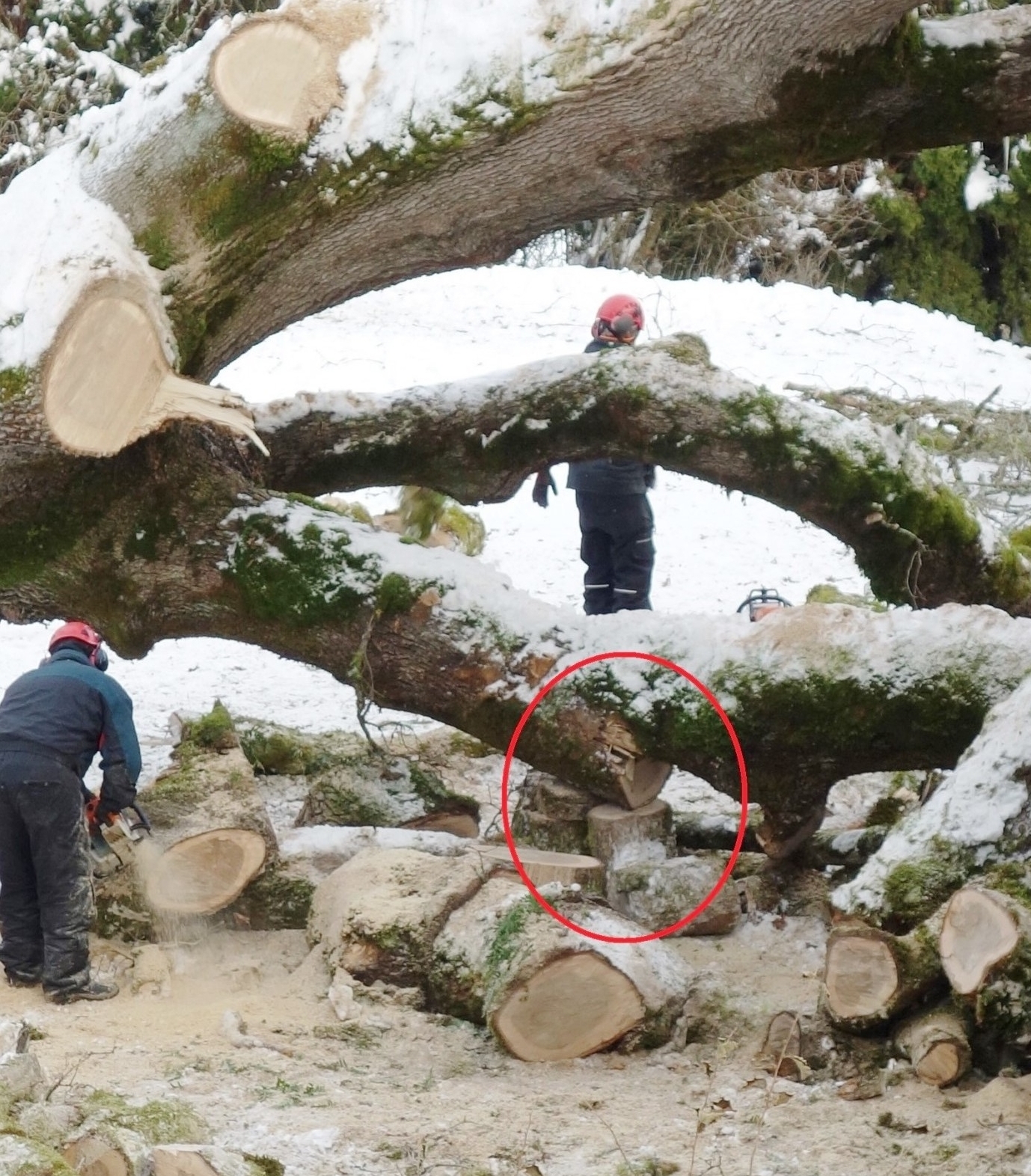Oak part II - the tree crew
/Three days of my tree crew view
VIDEO BELOW - "Day 1: Cut, move, toss, repeat"
This magnificent oak coming down upon my neighbor's house, was surreal. The tree lay silent on the house for two days here (photos below), gradually putting more weight on the walls and frame as it settled. My neighbors and I mourned the giant tree's loss, and remained nervous and on edge.
And then the tree removal crews arrived.
Photo of the back of my neighbor's house; view from my yard.
This is a two-story house, about 2400 square feet inside. Fallen tree covered the entire house.
(Addendum: It broke the roof ridge in 6 places, and considerable other damage that's hard to see in photos.)
The back of my neighbor's house.
The weight of the tree is borne 1) at the source of the trunk and 2) across the whole roof, particular weight bearing on north walls.
Note in the photos above that the weight of the tree is dispersed at 1) the trunk source, and 2) the rest is entirely upon the house, with several major weight-bearing touch points, across the roof of the house.
Front roof of the house, as seen from my yard, with the tree spreading out across the roof.
When the tree crews arrived, it began a 3-day mystery-suspense for me, as I could not imagine how they were going to be able to get the tree off the house without a crane, without smashing the house. I speculated with everyone who was willing to chat (and there were many spectators willing!)--how could they, physically and mechanically, remove the massive dozen-plus limbs without smashing the house by the limbs' own weight--i.e. when one limb was removed, would that not mean that more weight would be shifted to the remaining limbs?
Eventually there could be only one main limb left, and all the massive trunk's weight would be on that single point. How could they do it without a crane?
Day 1 began at dawn, with a cherry picker.
Day 1 began, like a game of Jenga or pick-up-sticks, with the simple stuff first. It was complex to sort through, but none of the first day's branches were bearing any weight.
The removal progressed bit by bit, with help from the cherry picker (bucket truck). The crew's greatest care was in staying 10' away from power line, which they did well in a tight situation.
These Day 1 photos show why I was obsessed with the crew's work: I could see nothing else from almost every room in my house! It was riveting.
The photos show progress of removals, bit by bit.
Extremely slippery conditions, as we were still in a deep freeze. Tree limbs were used for safety harness anchors, and later also for anchoring pulleys for limb section removals.
The view from my house! For three days! Better than TV.
One of my favorite shots. So much color. So much action.
Beginning to show some of the damage to the roof.
(Addendum: although the damage was considerable, there was miraculously much less than could have been.)
End of Day 1. The five-man crew got as much done as they could while they had the cherry picker. The next two days would be the slower work of removing the weight bearing limbs.
Day 2 - showing the removal progression. This day began the more complex task of heavier limb pieces, lifting them off the house, and the care needed to prevent more damage on their way down.
Today the more experienced man was on the chain saw. The ground crew held the heavy cut pieces away from the house by ropes, and guided their fall.
The athleticism of skilled tree work. Tree wrangling. (I seriously could watch this stuff all day, y'all.)
Day 3. I could not see the work from my house any more, so I headed down to my neighbor's. I think the guys had gotten used to me shooting and filming them. Lucky me, they tolerated my prolonged presence. (Also I shared the pictures with them; which I think they liked.)
Lead man on the right, with chain saw. Photo also shows the rigging that they used as the tree limbs (available anchor points) became shorter and shorter.
Jason
The piece that's falling---just released by the chain saw---is circled.
Ground crew controls the fall with their rigging.
Lowering the log
As the log is lowered, the ground crew catches it so it doesn't bounce into the house.
As the log is lowered, the ground crew catches it so it doesn't bounce into the house.
Then immediately upon fixing rigging to the next piece, the pulley lines are tightened.
Tricky avoiding damage. Here crew boss is checking beneath and under, before making a cut at one of the problematic spots. If they don't cut right, more damage is done by weight of the limbs.
Lots o' rigging.
The video below was taken near the end of the last day. The three-day "tree removal" was only a Phase One of a three-phase arborist's job, as the massive tree really was not (and still is not) totally removed. With the story of this blog (just the arborist's part), they were clearing the roof so the carpenters could temporarily cover it. Big rains were coming the next day.
Video shows one part of the dance--how 5 men got this tree off the house, one step at a time:
To answer my question from Day 1-- How did they get the tree off the house without a crane, without smashing the house? How would they shift the massive load off the limbs, and thus off of the building? I learned the answer on the last day.
The crew used a jack on one part of the trunk, to lift it and push giant "shims" under its low spot. So clever! And they used the principles of a tripod to make the trunk's leaning weight more stable. The 50 tons of this oak trunk is supported by its three contact points with the ground.
Triad support. Compare this shot with the 4th image in this blog.
Shims under limb, supporting it.
The simplicity of using a jack, shims, and a triad of support--over using a crane--
is brilliant!
I thank the crews for letting me film them. Their work was fantastic.
Skilled tree wrangling courtesy of Jason and the Inexpensive Tree Care crews.
See Part I of this trees's story: here.

